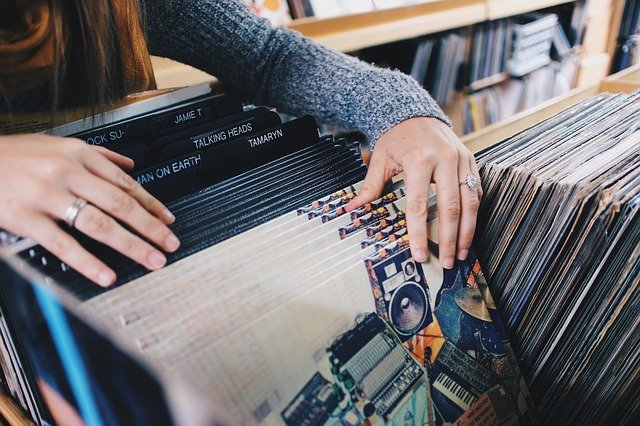Can Vinyl Store Make A Comeback
It started in 1877 with the first phonograph by Thomas Edison, who played back sound from wax cylinders covered in tin foil. It soon developed into the vinyl album and the turntable, which gradually became a keystone in individual homes. By the mid-1960s, cassettes and 8-track recordings started rolling along, making it possible to enjoy your favorite songs in your home’s comfort. It looked as if popular music would not get any better (or, at least, no more convenient).
So then video media was developed, opening the door to CDs so eventually internet download, which is at an all-time peak right now. In 2017, according to Nielsen Music, people listened to more than 32 hours a week.
But if you think vinyl has been reduced to the position of a collector’s niche segment, you will be very incorrect. Audio via Nielsen 2017, the U.S., The Music Year-End Report, reports that in the United States alone, over 14 million vinyl albums were distributed that year — the largest number since 1991, according to Billboard.
Vinyl record Categories:
Vinyl recordings are categorized by diameter and speed of replay. You may play a vinyl record at any amount of RPMs (rotations per minute), but it should only sound perfect in one setting. The provided RPM is the pace they will spin at. Below are a few of its types:
- Long play (LPs): Most popular vinyl record type; diameter of 12 inches. Mostly these are complete albums that play up to 30 minutes of music per hand. Record LPs at 33 1/3 RPM.
- Singles / Extended Plays (EPs): 7 inches in diameter, the singles / EPs will perform 4 to 7 minutes a hand, and will accommodate a song or two. Run EPs at 45 RPM.
- Standard Play: With a width of 10 inches and a play pace of 78 rotations per minute, these will accommodate up to 5 minutes of music on either hand. This style is no longer produced but is still common with record collectors. Companies such as Copycats Media now offer production of vinyl records in addition to CDs and DVDs.
Nostalgia:
Several decades back, vinyl albums were available. As long as you have a proper turntable and pick, you should take out the old albums your ancestors listened to and enjoy them again. You should listen to history when you purchase a 30-year-old album, and realize that your kids can love the same sound as long as someone doesn’t attempt to mimic the turnable sound effects of a DJ. In contrast, the vinyl trend is so strong that some musicians release recorded and digitally mastered songs to vinyl. Such vinyl albums by contemporary musicians aren’t music enthusiasts raving over the high-resolution formats, but they sound cooler and appeal to a particular group of audiences.
Serious vinyl stores help fuel the medium’s rebirth: for the excitement of discovering a rare LP in a strange cardboard box at the back of a small record shop and being able to attach it to your own collection at home, there’s plenty to claim. However, MusicWatch notes that 27 percent of vinyl purchasers are 36 or older. This does not come as a shock, because album collecting is a way for people who have grown up with music to reconnect with their youth.
Price SUND.
Enthusiasts have been choosing vinyl to 8-tracks, cassettes, and other streaming media for years. To traditional lovers, hearing the album on vinyl is smoother, fuller, and “warmer” than watching songs from social network platforms without sound engineers attempting to preserve the character while it is transformed digitally. You do get rich music instead of the minimal music designed for noisy performance on the radio.
Experience Listening:
It is definitely modified how people listen to music, due to the success of digital music. Earbuds and portable monitors have come to predominate, but it’s a safe bet that music fans will lavish time and energy at their homes on specialized Hi-Fi systems. Having a nice set of speakers and a high-quality turntable and stereo receiver is only part of the experience. It is also about sitting down and listening carefully instead of playing streamed music in the background or while you are at work. If you’re putting on an album, it’s probably with the specific intention of sitting back in your listening room and having fun.
Tangible:
Yeah, premium entertainment platforms provide unparalleled exposure and flexibility, but there’s still something lost: possession. You don’t own the music when you enjoy downloaded audio files via a device. On the other hand, Vinyl albums are actual objects that you can purchase, keep in your pockets, buy in person, and constantly debate with record shop clerks and fellow music lovers. Vinyl also provides other tangibles, such as cover artwork and liner notes; whether the streaming platforms also provide such items, you know exactly where to press.
Vinyl fans love the better sound quality, accept the feeling of nostalgia and personal engagement, their user-friendliness, admire the long-term commitment an album reflects and enjoy the lovely coverings. Besides, manufacturers want to make something that really sells.
Feature Image by Free-Photos from Pixabay

